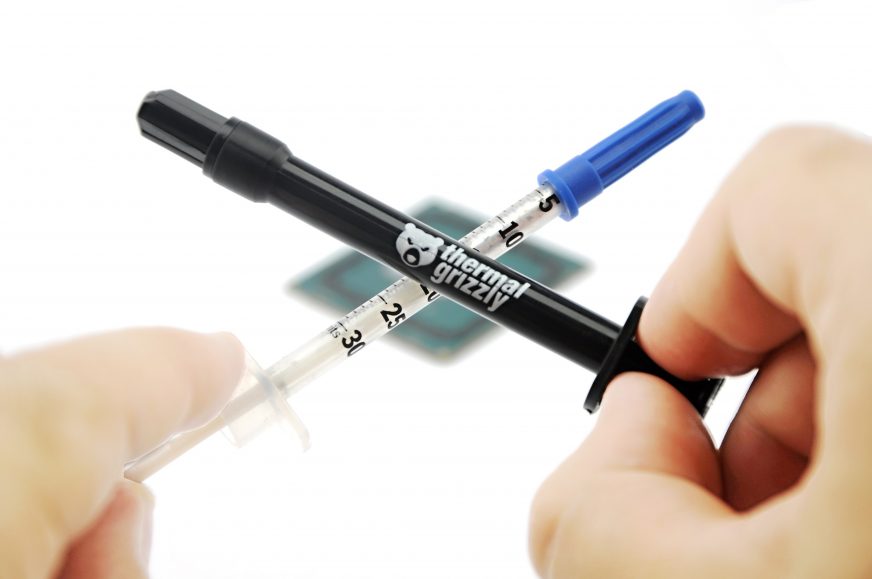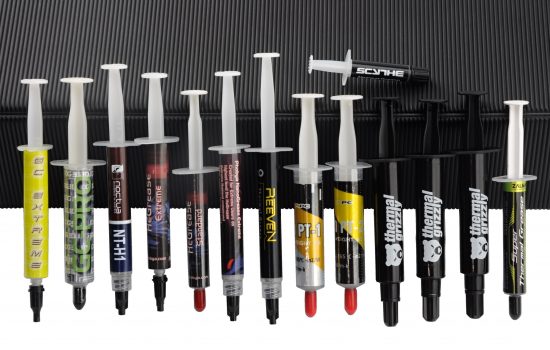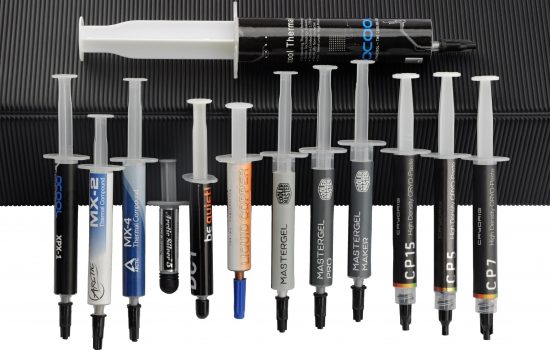Description and results
Coollaboratory is well known among the hardware enthusiasts, mainly thanks to its liquid metals. The model with higher thermal conductivity, Liquid Ultra, is commonly preferred with high power consumption chips since their default compounds are usually of lower quality. To find out whether CLU still pays off, we put it to the ring with an opponent from the Thermal Grizzly workshop, and with Core i5-7600K as the referee.
Data about thermal conductivity of Coollaboratory Liquid Ultra (CLU) are missing in the official data sheet. Some sources mention very optimistic 90 W/mk, but most of them point out to “only” 38.4 W/mk, which sounds a bit more realistic. Thermal Grizzly plays with hands revealed, Conductonaut has 73 W/mk on paper. The price (around 9 euros) and the amount are similar in both cases, about 1 g/0.15 ml.
Thermal Grizzly has a more practical applicator. The cotton stick is more comfortable and safer to use – it is simply easier to create a smooth thin layer with it. Also, it does not splash the liquid metal particles all around as much as the Coollaboratory bristles.
Results
Tests were based on the same procedures as Operation Kaby Lake: 24 ways to cool the chip. For a better orientation in the charts, we’d like to remind you that CLU + MX-2 represent the mode where CLU is used on the chip, and Arctic MX-2 is used between heatspreaders of the processor and the cooler.
Well, results show that Thermal Grizzly Conductonaut (TGC) is more efficient and it managed to maintain lower temperatures (-4 – -4.5 °C) of our overclocked processor (approx. 110 W). Coollaboratory Liquid Ultra is therefore a worse choice for the same price.
If you would like to give us a tip for a review, feel free to do so in the comment section.
We will be grateful for any feedback!
- Contents
- Description and results












Thank you for this article. It’s excellent and along with your Thermal Compounds test, is rarely covered in the PC world. I’m a huge fan of CLU but has always been difficult as hell to put on. I really questioned if it had any beneficial effect but it looks like Grizzly makes a better LM. I’ll buy a tube as soon as I can find one!
Well, Thermal Grizzly had a bit more time to work on their product 🙂
Can you test with Coollaboratory Liquid Pro too? I saw the information on their website said Thermal conductivity is 80 w/mk is higher than Thermal Grizzly Conductounaut